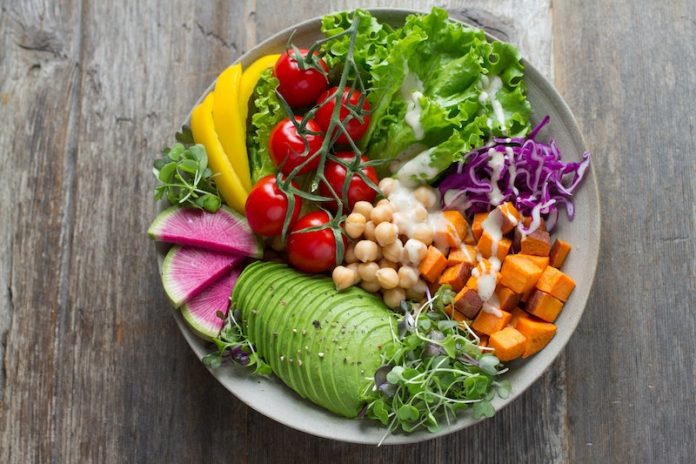
Scientists from Purdue University found that a Mediterranean diet with low GI foods could manage blood sugar levels in people with a high risk of type 2 diabetes.
Metabolic syndrome is a cluster of conditions that occur together, increasing the risk of heart disease, stroke, and type 2 diabetes.
These conditions include increased blood pressure, high blood sugar, excess body fat around the waist, and abnormal cholesterol or triglyceride levels.
The Mediterranean diet is a way of eating that’s based on the traditional cuisines of Greece, Italy, and other countries that border the Mediterranean Sea.
Plant-based foods, such as whole grains, vegetables, legumes, fruits, nuts, seeds, herbs, and spices, are the foundation of the diet.
A Mediterranean-style healthy eating pattern supports metabolic health, but whether including low-glycemic index (GI) foods in the diet could minimize meal-related blood sugar remain unclear.
Your blood sugar level rises immediately after eating a meal or snack.
In a healthy person, insulin then starts working, and the blood sugar level returns to the pre-meal level 2 hours after eating.
In untreated diabetes patients, the blood sugar level does not return to the pre-meal level of its own accord.
Some studies suggest that a low glycemic index diet can help maintain weight loss. A high glycemic index increases the risk of breast, prostate, colorectal, and pancreatic cancers.
A high glycemic index diet increases the risk of developing type 2 diabetes and heart disease.
In the study, the team examined the contribution of GI towards improvements in blood sugar levels in people with type 2 diabetes.
They compared high- versus low-GI diets in people at risk for type 2 diabetes.
Low GI foods include green vegetables, most fruits, raw carrots, kidney beans, chickpeas, lentils, and bran breakfast cereals.
Medium GI foods include sweet corn, bananas, raw pineapple, raisins, oat breakfast cereals, and multigrain, oat bran, or rye bread. High GI foods include white rice, white bread, and potatoes.
The participants were from Italy, Sweden, and the United States. They have at least two metabolic syndrome symptoms.
For 12 weeks, 160 participants ate either a low-GI or high-GI Mediterranean diet.
The team examined meal-related blood sugar and insulin responses to high- or low-GI meals and daily blood sugar change via continuous glucose monitoring during the study.
The researchers found that the people’s meal-related blood sugar levels were higher after the high-GI meals compared to the low-GI test meals.
Meal-related blood sugar levels after the high-GI meals increased and were much higher than that after the low-GI meals.
The team also found the average daily blood sugar levels decreased in both groups after the study.
But the blood sugar variability for 24 hours was reduced in the low-GI diet group compared to the high-GI diet group.
High levels of variability can be an indication that the person is becoming insulin resistant—the body is unable to use insulin efficiently to control glucose—and this is at the root of metabolic dysfunction.
Based on these findings, the researchers suggest that low-GI foods may be an important part of the Mediterranean diet to benefit people at a high risk of diabetes.
The research is published in Nutrients and was conducted by Robert Bergia et al.
Copyright © 2022 Scientific Diet. All rights reserved.








